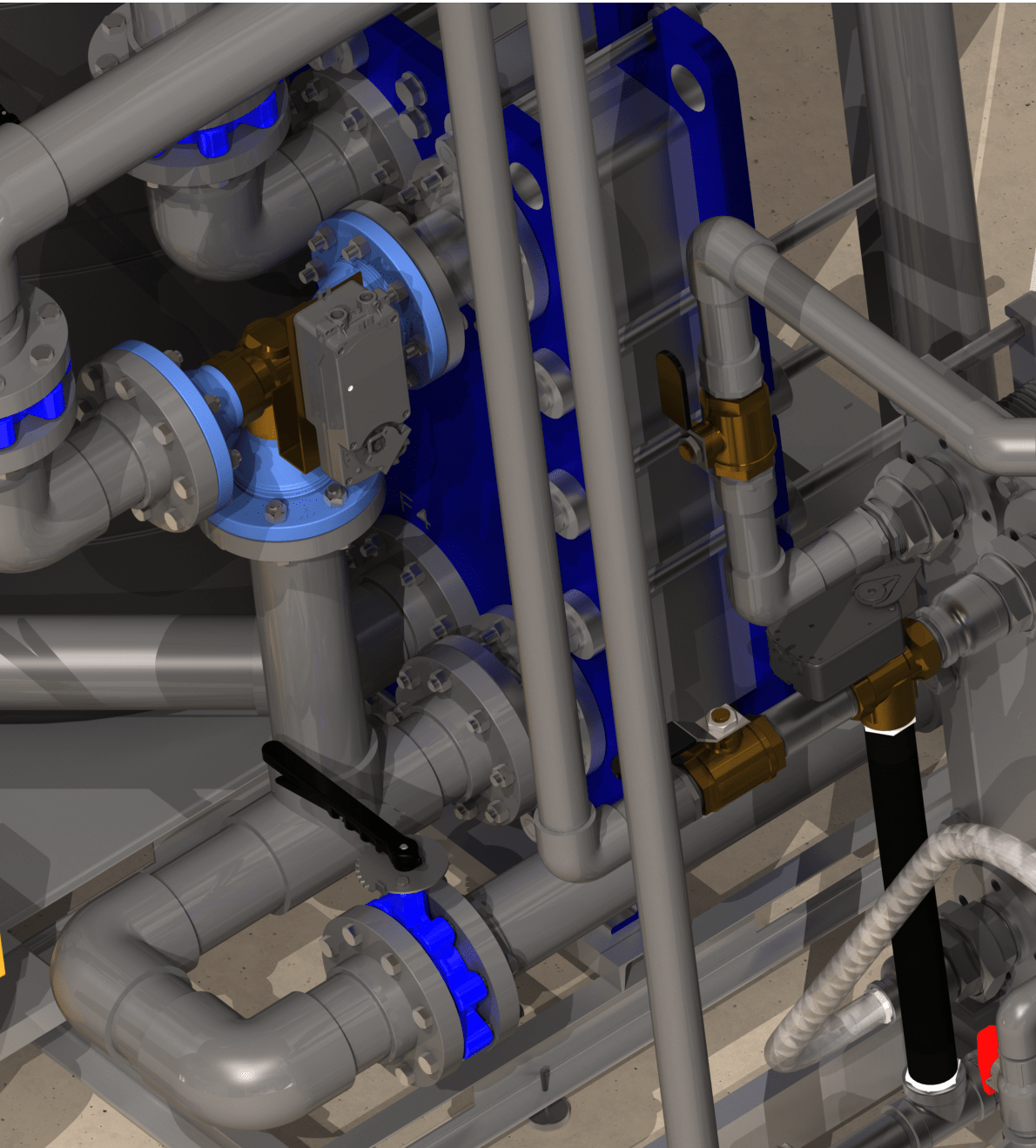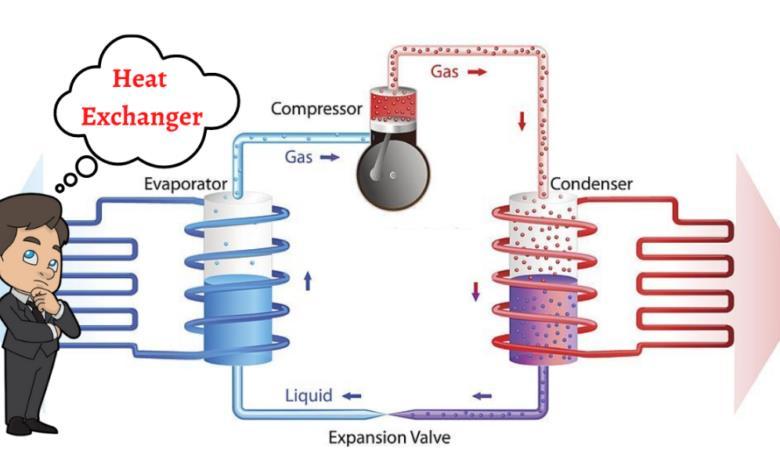How DVS Heat Transfer Systems Are Transforming Energy Efficiency in Industrial Cooling
Wiki Article
The Duty of Heat Transfer Solutions in Sustainable Power Solutions for the Future
Heat transfer systems are necessary in the pursuit for sustainable power services. They enhance thermal power administration, boosting the performance of renewable innovations. By employing devices like radiation, convection, and transmission, these systems minimize energy losses. Their role in solar thermal and geothermal applications is specifically substantial. As innovations arise, the capacity for more improvements increases essential questions about future power strategies. What advancements will form the landscape of lasting power?Understanding Heat Transfer Equipments

The Value of Thermal Power Administration
Reliable thermal power monitoring is crucial for optimizing power efficiency and lessening waste in various systems. By managing temperature level and enhancing Heat transfer procedures, companies can noticeably minimize power usage and operational costs. Efficient monitoring includes the implementation of innovative innovations and practices that monitor and control thermal problems within systems, guaranteeing that energy sources are made use of successfully. Furthermore, appropriate thermal power management adds to minimizing greenhouse gas exhausts, straightening with global sustainability goals. It likewise boosts system integrity and performance, bring about boosted product high quality and longer tools life expectancy. Inevitably, prioritizing thermal power administration is an important step in the direction of developing a lot more sustainable power remedies and fostering an accountable method to power intake in property and commercial contexts.Applications of Heat Transfer in Renewable Resource
While different renewable resource resources guarantee sustainability, the efficient application of Heat transfer plays a vital duty in their efficiency. In wind power systems, Heat transfer is made use of for wind turbine part air conditioning, enhancing performance and durability. Geothermal power counts on reliable Heat exchange in between the planet's subsurface and the fluid distributing in the system, making best use of power extraction. Biomass energy processes likewise profit from Heat transfer, as it assists in transforming natural materials into usable gas through pyrolysis and gasification. In addition, in hydropower, keeping perfect temperatures in storage tanks can improve energy outcome. Each of these applications shows the crucial importance of Heat transfer systems in enhancing renewable energy technologies, ultimately adding to an extra sustainable energy future.Enhancing Solar Thermal Power Efficiency
As solar thermal power systems remain to evolve, boosting their effectiveness has actually ended up being crucial for taking full advantage of power result. Advancements in Heat transfer technologies, such as enhanced thermal storage products and cutting-edge Heat exchangers, play a substantial function in enhancing performance. By using advanced products that have exceptional thermal conductivity, systems can transfer and capture Heat better. Additionally, integrating monitoring systems that comply with the sunlight's course guarantees that collection agencies get perfect solar direct exposure throughout the day. Utilizing nanotechnology in solar absorbers can better boost energy absorption prices. Additionally, integrating automated control systems helps manage and control temperature levels power circulation efficiently, causing decreased losses and boosted overall system performance. These enhancements lead the means for even more sustainable solar thermal energy services in the future.Geothermal Heating: A Sustainable Option
Geothermal heating presents a feasible option for lasting power, supplying significant environmental benefits through reduced greenhouse gas exhausts. Its performance and cost-effectiveness make it an eye-catching alternative to typical heating unit. Difficulties connected to execution must be addressed to optimize its potential effect.Ecological Benefits of Geothermal
Typical heating methods add significantly to greenhouse gas exhausts, geothermal home heating offers a compelling option that minimizes environmental impact. By utilizing the Earth's interior Heat, geothermal systems utilize a renewable resource resource, substantially decreasing dependence on nonrenewable fuel sources. This technique generates minimal carbon discharges, making it a cleaner alternative for commercial and household home heating. Additionally, geothermal systems advertise power performance, as they need much less energy contrasted to traditional furnace. DVS Heat Transfer Systems. The usage of geothermal energy additionally assists in lowering air pollution, improving local air high quality and public wellness. As a lasting option, click here for info geothermal heating supports climate change reduction initiatives, placing itself as a crucial part in the change in the direction of a greener futureEfficiency and Cost-Effectiveness
How does geothermal home heating measure up in regards to performance and cost-effectiveness compared to conventional heater? Geothermal heating demonstrates superior performance, usually attaining a coefficient of efficiency (POLICE OFFICER) of 3 to 5, suggesting it produces three to 5 units of Heat for every single system of electricity consumed. This efficiency converts into lower operating costs, especially in regions with stable geothermal sources. First installment costs can be greater than standard systems; nevertheless, long-lasting savings on energy costs and lowered upkeep expenditures can offset these ahead of time financial investments. Additionally, several federal governments incentivize geothermal systems via refunds and tax obligation credit histories, improving their cost-effectiveness. On the whole, geothermal heating emerges as a economically sensible and lasting option to even more traditional home heating solutions.Application Difficulties and Solutions
Various difficulties can hamper the prevalent execution of geothermal furnace, regardless of their clear benefits as a lasting energy service. High first installment costs frequently prevent capitalists and homeowners, making financing a substantial barrier. Furthermore, the geographical restrictions of appropriate geothermal sites restrict access in certain areas. Neighborhood laws and permitting procedures can also make complex task advancement, resulting in delays. In addition, public awareness and understanding of geothermal systems remain reduced, impeding acceptance. To deal with these difficulties, targeted education campaigns can enhance open secret, while government motivations might alleviate economic worries. Working together with neighborhood authorities to improve policies may promote smoother job authorizations, eventually advertising the fostering of geothermal home heating as a feasible, lasting energy choice.Developments in Heat Transfer Technologies
Innovations in Heat transfer technologies play a vital duty in boosting energy efficiency and sustainability. Advanced Heat exchangers and phase change materials go to the leading edge of these developments, providing considerable improvements in thermal monitoring. These innovations not just optimize power usage however likewise add to reducing ecological influence in different applications.Advanced Heat Exchangers
Advanced Heat exchangers play an essential duty in boosting power effectiveness throughout different applications in sustainable energy remedies. These tools facilitate the transfer of Heat between two or even more fluids, substantially lowering power usage in procedures such as industrial home heating, air conditioning, and power generation. Advancements in products and layout, such as using nanofluids and compact arrangements, have brought about boosted thermal performance and reduced size demands. In addition, developments in digital surveillance and control systems enable maximized operation, additional boosting performance. By reducing waste Heat and maximizing energy recovery, progressed Heat exchangers add to reduce carbon impacts and sustain the shift toward eco-friendly modern technologies. Their proceeded advancement is crucial for achieving worldwide power sustainability goals.
Phase Change Materials
The integration of phase change materials (PCMs) into Heat transfer innovations stands for a substantial improvement in power monitoring and performance. PCMs soak up and release thermal energy throughout their phase changes, making it possible for efficient temperature level regulation in structure materials and power systems. By keeping excess Heat during top periods and releasing it when demand increases, PCMs contribute to fill changing and energy preservation - DVS Heat Transfer Systems. This ability boosts the efficiency of sustainable energy systems, especially in solar thermal applications. Furthermore, PCMs can boost the thermal comfort of indoor settings, decreasing dependence on traditional home heating and cooling down approaches. As innovations in PCM formulas proceed to emerge, their function in sustainable energy remedies is positioned to expand, supplying promising avenues for future study and application
Future Potential Customers for Heat Transfer in Sustainable Energy
As the demand for sustainable power remedies proceeds to climb, the duty of Heat transfer systems is becoming progressively vital fit future modern technologies. Advancements in styles and products are anticipated to improve effectiveness in Heat transfer, decreasing energy losses in numerous applications. The combination of sophisticated thermal storage systems, such as stage modification products and thermochemical storage, will make it possible for far better administration of energy sources. Study right into nanofluids and biomimetic Heat exchangers may additionally enhance thermal efficiency. Moreover, the fostering of clever modern technologies will allow for real-time tracking and adaptive control of Heat transfer processes. These developments are positioned to significantly add to the general look what i found effectiveness and sustainability of energy systems, leading the way for an extra energy-efficient future.Regularly Asked Inquiries
Just How Can Individuals Carry Out Heat Transfer Systems in the house?

People can apply Heat transfer systems at home by installing energy-efficient appliances, making use of glowing home heating, and maximizing insulation. These actions boost power efficiency, decrease prices, and advertise lasting methods in property atmospheres.

What Are the Expenses Associated With Mounting Heat Transfer Systems?
The expenses connected with mounting Heat transfer systems vary widely, normally incorporating equipment, setup labor, and upkeep. Elements such as system kind, home size, and local policies significantly influence the total expense entailed.Exist Government Motivations for Heat Transfer System Installations?
Federal government motivations for top article Heat transfer system installments vary by area and can consist of tax credit scores, grants, and discounts. These economic benefits intend to encourage adoption, ultimately promoting power efficiency and decreasing ecological influence within communities.Just How Do Heat Transfer Solutions Influence Power Bills?
Heat transfer systems notably influence energy bills by optimizing energy efficiency. By boosting the transfer of Heat, these systems lower energy intake, causing reduced energy prices and creating a much more sustainable approach to energy management.What Maintenance Is Required for Heat Transfer Equipments?
Maintenance for Heat transfer systems includes regular evaluations, cleansing of elements, checking fluid levels, making certain correct insulation, and changing used parts. These jobs help preserve performance, stop failures, and extend the system's operational life expectancy.These systems promote the motion of thermal power from one medium to another, making it possible for the transfer of Heat for energy, home heating, or air conditioning generation objectives. Geothermal power depends on efficient Heat exchange in between the planet's subsurface and the liquid circulating in the system, maximizing power extraction. Additionally, geothermal systems promote energy performance, as they call for much less power compared to traditional heating systems. Advanced Heat exchangers play an important role in boosting energy efficiency throughout numerous applications in lasting energy solutions. Heat transfer systems significantly influence power bills by maximizing energy efficiency.
Report this wiki page